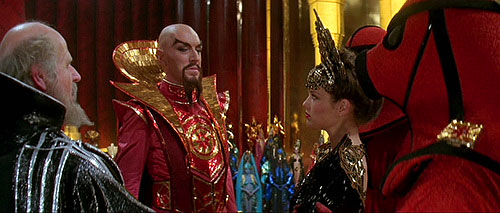The Man of Sin

One major difference between Jordan and other preterists is his identification of Paul’s “man of sin.” Jordan is correct in naming the Herods rather than Nero because he understands biblical typology better.
The pattern during the Restoration era was that God’s representative, a Jew, would sit at the right hand of the power, like Daniel, like Mordecai. In this, like Joseph, they prefigured Christ. This man would first qualify by passing God’s tests of obedience. Daniel passed with flying colours. Mordecai fumbled the ball and Haman was given the post instead. Haman was an Amalekite.
In the first century, instead of a ‘Jacob’ on this throne under the Gentile emperor, it was an Edomite, an Esau. One of Esau’s grandchildren was deliberately named Amalek (Genesis 36), a compromise with a Gentile power from “the Abyss” that God had specifically named as an eternal enemy.
Here’s the biblical pattern. With the circumcision of Abraham, God tore the world in two. The Bible uses creation symbols to denote his descendants as the mediatorial “Land”, and the Gentile nations as the “Sea.” A Gentile power is a Sea beast. A Jewish king compromised with Gentile political power is a Land beast.
In Revelation, the Sea beast is Nero’s Rome, called up by Satan after his failed attempts to destroy the embryonic church with Jewish persecution and false Judaising doctrine. This is the serpent. But there is another “beast” with the horns of a lamb and the mouth of a dragon–a false prophet, a lying Adam (High Priest). This is not a Gentile power. It is a Jew who names his offspring after a hated enemy of God. It is a Haman sitting at the right hand of the Gentile power, a little horn with the eyes and mouth of a man (a Jew), the human face on the faceless beast of Rome, steering the empire against the people of God.
So the reference to the number of this man, 666, becomes easy to interpret. The first rule for Israel’s kings that Solomon broke was the one against amassing gold. Solomon received 666 talents of gold in one year. Gold was so abundant that silver was just about treated like refuse. 666 simply denotes a corrupt Jewish king. Yep, that’s it. (See my book Totus Christus for further support of this from the structure of the passage. Nero isn’t even in the picture. Judgment begins at the house of God. As Jordan points out, the references to wisdom and understanding are ironic references to Solomon also.)
Paul refers to this man of sin sitting where he ought not to be sitting, in a seat of judgment, the temple of God. The Herods styled themselves as Solomons, sitting in Moses’ seat and judging wisely. They were certainly street-wise, cunning foxes, like Emperor Ming–excelling in government by manipulation for their own bestial ends. But by God’s standards they were fools.
The Spirit of Jesus’ coming in judgment against a Judah that had hardened her heart beyond repair destroyed this false Joseph/Daniel/Mordecai. Revelation shows the saints, already slaughtered or still under threat, praying for deliverance from the “justice” of this counterfeit messiah (anti-Christ) in his shiny new Temple. Who else deliberately and repeatedly denied Jesus’ incarnation at this level of government PR?
And this scene from Flash Gordon (a cheesy movie, but gourmet cheese) captures the drama of the return of Christ for his firstfruits church perfectly. Go Flash go.
“He’ll save every one of us.”
______________________
In The Handwriting on the Wall, Jordan notes the progression of authority in Israel’s mediatorial history, from Land under David and Solomon, to empire-Land under Esther and Mordecai, to true world power under Christ, who steers, or Advocates, at the right hand of the true Power. The four empires were pictures of the cherubim under the throne of God. This included Nero, as a beast from the Sea (Daniel 7). Each time one of these guardian beasts went bad, it was swiftly replaced by God, beginning with the fall of Belshazzar’s Babylon.
See also Jordan’s article The Abomination of Desolation.


























December 5th, 2009 at 9:43 pm
Bully, you ROCK!! That jpg from Flash Gordon was….I’m speechless!
December 7th, 2011 at 10:04 pm
It seems Edomites have green blood.